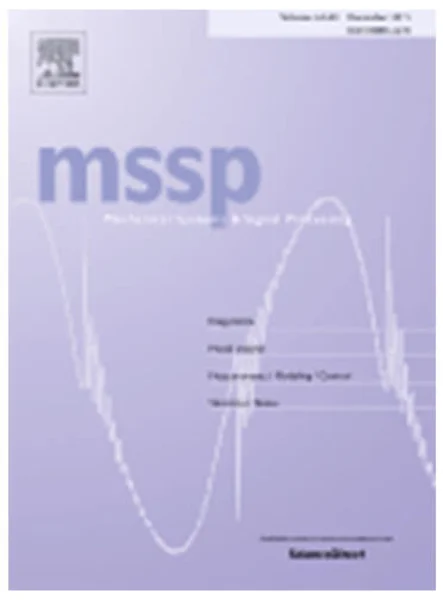-
damage identification by response surface based model updating using d-optimal design
جزئیات بیشتر مقاله- تاریخ ارائه: 1390/01/01
- تاریخ انتشار در تی پی بین: 1390/01/01
- تعداد بازدید: 492
- تعداد پرسش و پاسخ ها: 0
- شماره تماس دبیرخانه رویداد: -
statistical tools, as well as mathematical ones, have been widely adopted and their performance has been shown in different engineering problems where randomicity usually exists. in the realm of engineering, merging statistical analysis into structural evaluation and assessment will be a tendency in the future. as a combination of mathematical and statistical techniques, response surface methodology has been successfully applied to design optimization, response prediction and model validation. this methodology provides explicit functions to represent the relationships between the inputs and outputs of a physical system, which is also a desirable advantage in damage identification. however, so far little research has been carried out in applying the response surface methodology to structural damage identification. this paper presents a damage identification method achieved by response surface based model updating using d-optimal designs. compared with some common designs constructing response surfaces, d-optimal designs generally require a minimum number of numerical samples and this merit is quite desirable when analysts cannot obtain enough samples. in this study, firstly d-optimal designs are used to establish response surface models for screening out non-significant updating parameters and then first-order response surface models are constructed to substitute for finite element models in predicting the dynamic responses of an intact or damaged physical system. three case studies of a numerical beam, a tested reinforced concrete frame and a tested full-scale bridge have been used to verify the proposed method. physical properties such as young’s modulus and section inertias were chosen as the input features and modal frequency was the only response feature. it has been observed that the proposed method gives enough accuracy in damage prediction of not only the numerical but also the real-world structures with single and multiple damage scenarios, and the first-order response surface models based on the d-optimal criterion are adequate for such damage identification purposes.
مقالات جدیدترین رویدادها
-
استفاده از تحلیل اهمیت-عملکرد در ارائه الگوی مدیریت خلاقیت سازمانی و ارائه راهکار جهت بهبود
-
بررسی تاثیر ارزش وجوه نقد مازاد بر ساختار سرمایه شرکت های پذیرفته شده در بورس اوراق بهادار تهران
-
بررسی تأثیر سطح افشای ریسک بر قرارداد بدهی شرکت های پذیرفته شده در بورس اوراق بهادار تهران
-
بررسی تأثیر رتبه بندی اعتباری مبتنی بر مدل امتیاز بازار نوظهور بر نقد شوندگی سهام با تأکید بر خصوصی سازی شرکت ها
-
تأثیر آمیخته بازاریابی پوشاک ایرانی بر تصویر ذهنی مشتری پوشاک ایرانی (هاکوپیان)
-
بررسی ارزیابی کارایی مصرف انرژی از نظر سوخت و برق ایستگاه های پمپاژ آبیاری بارانی مطالعه موردی
-
بررسی و مقایسه ی معماری های امنیتی رایانش ابری در راستای ارائه راهکارهایی جهت توسعه سازمان های امنیتی
-
مطالعه آزمایشگاهی رفتار برشی اتصالات پیچی در سازه های فولادی سرد نورد شده
-
بررسی تطبیقی عوامل موثر بر مدیریت پورتفولیوی پروژه ها مطالعه موردی: شرکت مهندسین مشاور آمایش و توسعه شرق و شرکت مهندسین مشاور طوس آب
-
use of ultrasonic waves in sub-cooled boiling
مقالات جدیدترین ژورنال ها
-
مدیریت و بررسی افسردگی دانش آموزان دختر مقطع متوسطه دوم در دروان کرونا در شهرستان دزفول
-
مدیریت و بررسی خرد سیاسی در اندیشه ی فردوسی در ادب ایران
-
واکاوی و مدیریت توصیفی قلمدان(جاکلیدی)ضریح در موزه آستان قدس رضوی
-
بررسی تاثیر خلاقیت، دانش و انگیزه کارکنان بر پیشنهادات نوآورانه کارکنان ( مورد مطالعه: هتل های 3 و 4 ستاره استان کرمان)
-
بررسی تاثیر کیفیت سیستم های اطلاعاتی بر تصمیم گیری موفق در شرکتهای تولیدی استان اصفهان (مورد مطالعه: مدیران شرکتهای تولیدی استان اصفهان)
-
چگونگی مدیریت مغالطه توسل به منبع ناشناس در سازمان ها
-
بررسی میزان کاربرد مدل های طراحی آموزشی در ارزیابی دوره های آموزش الکترونیک در نظام آموزش عالی ایران
-
بررسی نقش تعدیل گر ارتباطات سیاسی بر رابطه بین ریسک سقوط قیمت سهام و هزینه سرمایه در شرکت های پذیرفته شده در بورس اوراق بهادار تهران
-
cost and time interaction behavior on construction materials procurement and execution processes in infrastructure projects
-
the impact of information technology on corporate communications department of the department of education in district 3 of tabriz




سوال خود را در مورد این مقاله مطرح نمایید :